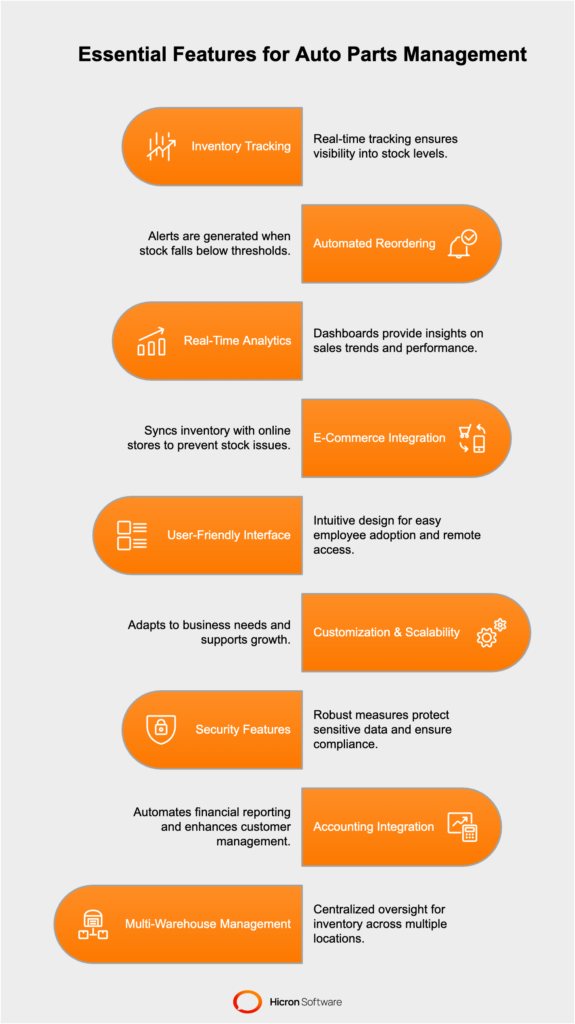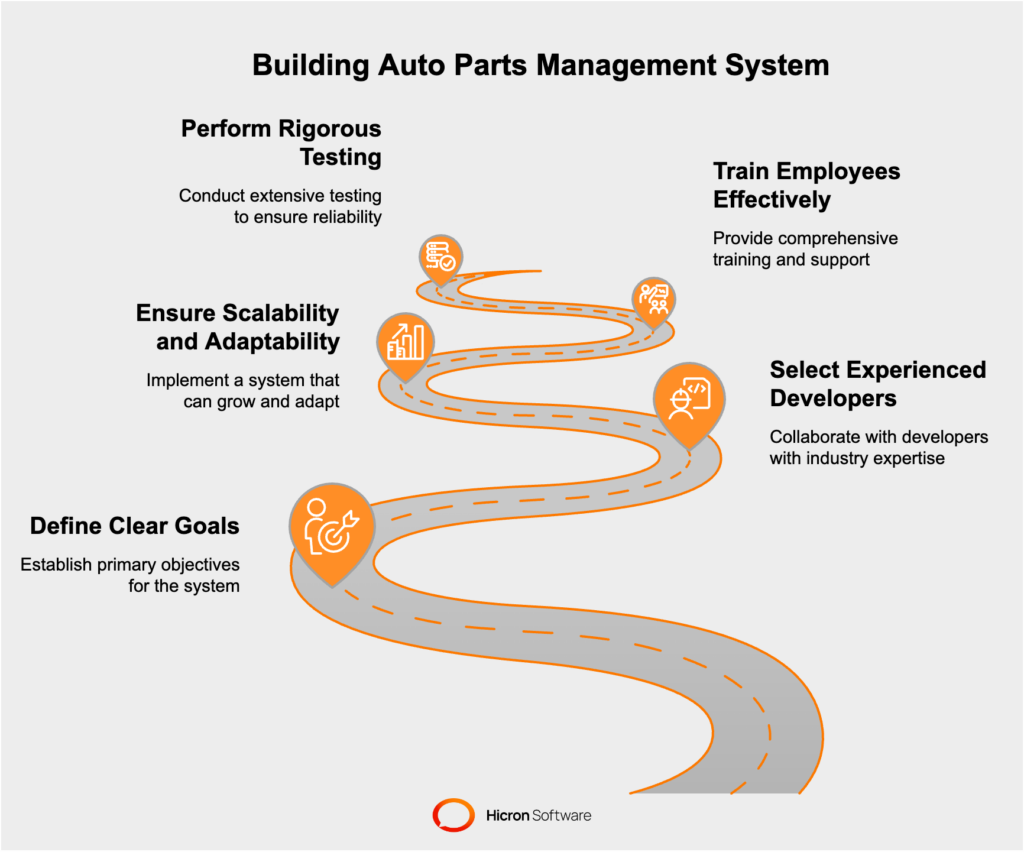Common Data Model in Automotive industry
- January 03
- 7 min

Creating an auto spare parts management system is a game-changing decision for automotive businesses aiming to improve inventory control, automate workflows, and enhance customer satisfaction. Whether you’re managing a repair shop, a dealership, or a parts distribution network, building a robust auto parts operating system with the right features is essential. Here’s a guide to the must-have capabilities and what to consider when developing an auto spare parts management system.
Effective inventory management lies at the core of an auto spare parts management system. Real-time tracking ensures full visibility into stock levels, allowing businesses to oversee parts like filters, brake pads, and spark plugs. Barcode scanning and serial number tracking streamline item location and reduce errors, preventing stockouts and overstock buildup.
Automated reordering ensures that stock levels are always adequate. The system generates alerts or orders when inventory quantities fall below pre-set thresholds. This feature saves time and prevents supply disruptions, guaranteeing that fast-moving items like oil filters or tires are always available.
Dashboards that provide data on sales trends, inventory turnover, and product performance are critical. With these insights, businesses can make informed decisions to optimize pricing, reorder quantities strategically, and accurately predict seasonal demand.
For businesses selling auto spare parts online, e-commerce integration is essential. The system should sync inventory with online stores in real time, avoiding scenarios where customers purchase out-of-stock items. Automated order tracking and shipping notifications enhance the buying experience, inspiring customer loyalty and trust.
A clean, intuitive interface is vital for easy adoption by employees. The interface should offer accessibility across multiple platforms, including desktop systems and mobile applications, enabling remote management for added flexibility.
An auto spare parts management system must be adaptable to each business’s needs. Whether you’re catering to unique part specifications or scaling operations across multiple locations, customization ensures relevance, while scalability future-proofs the system as your business expands.
Handling sensitive data like customer details and supplier information requires robust security measures. Encryption, multi-factor authentication, and regular updates are crucial for maintaining data integrity. An audit trail function tracks system activity, reinforcing compliance and transparency.
Combining your auto spare parts management system with accounting tools allows automated financial reporting and invoicing. CRM integration further promotes customer relationship management by improving communication and order tracking while personalizing the customer experience.
For businesses operating across several warehouses, centralized oversight is essential. A good management system enables inter-warehouse transfers, tracks inventory across all locations, and generates comprehensive analytics to streamline logistics and reduce errors.

The integration of an auto spare parts management system with the automotive agency model offers a powerful approach to streamlining operations and enhancing scalability. The automotive agency model focuses on centralizing processes to improve efficiency and customer satisfaction—values perfectly aligned with the goals of a robust management system.
For example, integrating spare parts management with this model enables stronger collaboration between manufacturers, suppliers, and distributors. Real-time inventory data can be shared, ensuring that supply chain operations are as synchronized as possible. Distributors could adjust their stock levels based on manufacturer updates, while suppliers could better track which products are in high demand.
Improved coordination can enhance the customer experience by enabling faster delivery and ensuring part availability when needed. This synergy between management systems and the automotive agency model allows businesses to achieve operational optimization at scale, keeping pace with market trends and customer expectations.
By incorporating this model, businesses can also integrate customer insights and operational analytics to create tailored offerings, mirroring the efficiency that has driven success in the broader automotive sector.

Building or choosing an auto spare parts management system is a forward-thinking step for automotive businesses seeking operational efficiency and customer satisfaction. Focusing on key features like real-time tracking, analytics, e-commerce integration, and scalability is essential. Implementing technology into auto spare parts management is vital. Integrating it with the automotive agency model can elevate collaboration, improve precision, and streamline customer service at scale. By investing in the right tools and strategies, businesses can position themselves as leaders in an increasingly competitive market. Contact us if you need support in optimizing an existing system or want to build something new.
